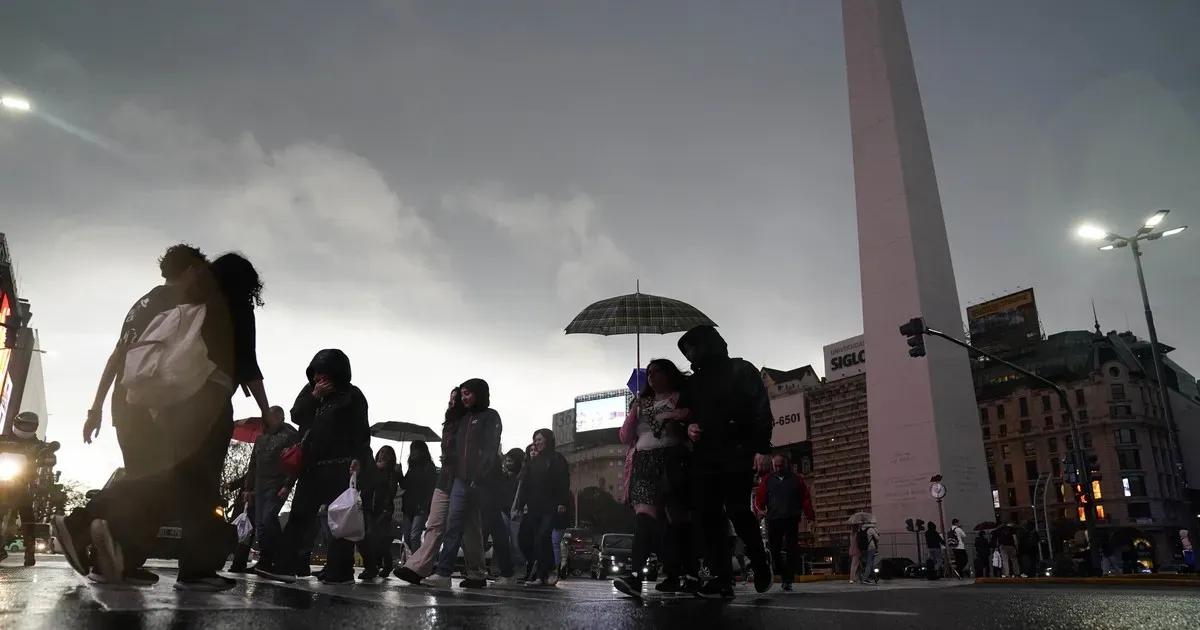The recent arrival of a double tropical cyclone originating in Brazil has generated alarm in various regions of Argentina. This meteorological phenomenon, characterized by an intense rotation of air masses, poses serious risks to the safety of the population and infrastructure. The central question is: how should the country respond to the imminent threat and what is the role of the State in emergency management?
🌪️ Current landscape
The Brazilian observatory MetSul has categorized the situation as high risk. The combination of two cyclonic systems can result in extreme weather conditions, including strong winds, torrential rains, and the risk of flooding. Recent stories of natural disasters in Argentina, such as the floods of 2015 in La Plata, remind us of the country's vulnerability to severe weather phenomena.
According to data from the National Meteorological Service (SMN), it is expected that the most affected areas will include provinces such as Buenos Aires, Santa Fe, and Entre Ríos. If adequate measures are not taken, it is likely that crisis situations will recur, resulting in significant human and material losses. Coordination between different levels of government and the training of communities are essential to mitigate the impact of such phenomena.
🌍 International comparison
In comparison, the United States and Japan have developed robust warning and response systems for natural disasters. In the United States, the National Hurricane Center provides constant updates and guidelines to the population during hurricane periods, which has allowed for saving lives and minimizing damage. On the other hand, Japan, a country highly exposed to natural disasters, implements a comprehensive approach that includes public education, resilient infrastructure, and evacuation protocols.
Considering these experiences, Argentina could benefit from a similar approach, adapting it to its context and specific needs. Implementing awareness campaigns and improving urban infrastructure are critical steps that must be taken to face the upcoming challenges.
⚠️ Social, political, and economic implications
The implications of a double tropical cyclone are multiple and extend beyond meteorology. Firstly, there is a direct social impact: the safety of the population and access to basic services such as water and electricity may be compromised. Moreover, social inequality is heightened in crisis contexts, where the most vulnerable sectors have the least resources to prepare or recover.
From a political perspective, emergency management can become a critical debate topic. The government's capacity to respond effectively to natural disasters reflects its legitimacy and competence. The public's perception of the government's effectiveness in crisis management can influence electoral decisions and trust in institutions.
Finally, the economic impact can be devastating. Affected infrastructure, losses in agriculture, and the costs of rescues and repairs can generate a ripple effect that affects the national economy. The need for resources for reconstruction may lead to a diversion of investments in other critical areas, such as education and health.
📊 Mitigation strategies and learning
In the face of such a complex landscape, it is crucial for Argentina to adopt clear and effective strategies to mitigate the risks associated with extreme weather phenomena. The creation of a early warning system that integrates advanced technology and citizen participation can be a significant first step. Additionally, promoting scientific research on climate change and its effects on the country is essential for long-term planning.
The development of resilient infrastructure and the implementation of policies for sustainable land use are equally important. Investing in the education and training of the population to be prepared for emergencies can substantially reduce associated risks.
Collaboration between the government, non-governmental organizations, and local communities can be the key to an effective and coordinated response to disasters. Evacuation drills and the dissemination of information on preventive measures can make a fundamental difference in how society faces these challenges.
In conclusion, the arrival of the double tropical cyclone represents not only an immediate challenge but also an opportunity for Argentina to reflect on its capacity to respond to adverse climate phenomena. The future depends not only on nature but also on our decisions and actions. A collective commitment is required to build a more resilient country, where preparedness and prevention are priorities on the national agenda.

Comments